Published on Nov - Dec 2020
MIDAS, Klark Teknik, Lab.Gruppen, Lake, Turbosound, Tannoy, TC Helicon, Behringer and Bugera - a formidable stable of known winners now all owned by a single company - MUSIC Group. Uli Behringer, MUSIC Group Founder & CEO, the man who achieved this envious ownership, and the force behind the group’s relentless focus on innovation, business transformation and overall IP creation fields 11 questions on the group’s philosophy, vision, R&D focus and plans going forward
1. In just 25 years you have built one of the largest and fastest growing Pro Audio Companies in the world. Any specific philosophy that helped you achieve this growth?
First of all, thank you for the opportunity to comment on our company, MUSIC, and address your readers.
Two years ago we celebrated our 25th anniversary and I’m very proud of our achievements as a company, and most of all our amazing employees, many of whom have been with us for 20 years and more.
Actually, my fascination for music evolved at a very young age. I was born into quite an unusual family - my father was a nuclear physicist and church organ player, my mother a pianist and linguist, my uncle a professor of composition at the Richard Strauss Conservatory in Munich, and my aunt a classical singer and pianist. What chance did I have to do anything else in my life other than music!?
At the age of four, my mother sat me down at the piano and began rewarding me with a grape for each correctly-played scale – a method of motivation for which I hold her in highest regard even today. My father was mad enough to build a real church organ with over 1000 pipes, which he integrated into the loft of our house! He acquired the organ and pipes in 1965 from a demolished church, and later went on to build the world’s first electronically controlled pipe organ, for which he earned multiple patents.
Bear in mind, in those days all organs were controlled mechanically or pneumatically and the connections to the keyboards were all of mechanical nature. So when a greater number of registers or keyboards were combined, the key action became much heavier. This made for true “finger body building”, so my father developed a system using electric contacts under the keys,
In 1982, I relocated from Switzerland to Germany to study sound engineering and classical piano. While I was studying to become a sound engineer, apart from a couple of old Telefunken mixing desks and reel-to-reel recorders, we only had a couple of microphones for approximately 200 students. When we wanted to borrow equipment, we had to sign up on a list and then wait approximately four months for the “big moment”.
It soon became clear to me that what I really needed – was my own studio. But 40 years ago, the cost of professional audio equipment was way out of reach for mere mortals like us, and recordings were only made in professional studios – and they were charging up to 2,000 dollars a day!
Being just a student, the only cash I had, came from my earnings as a pianist. There was no way I could afford expensive studio gear in those days.
One day, a friend brought me a mixing desk for repair, and when I opened the desk I realized that the cost of all the components was only about $200, but the console sold for $2,000. This really irritated me, as I felt it was greatly unfair to ask for so much money from a musician.
So I started to make a few pieces of equi-pment. At first, it was just for my own use and then for a few friends. I charged only a very small amount for the units. The word began to spread that my devices sounded really good, and were very reasonably priced. Suddenly all of my colleagues wanted them, and to my astonishment, I had already sold ten units before I’d even started building them. As a result, I quickly converted my apartment into a “factory”. What really struck me was the obvious fact that all of my friends and I had the same problem – none of us could afford really decent equipment.
I knew right then it would be my personal mission to stand up for musicians and create excellent and reasonably priced audio equipment, so any musician could afford to pursue a musical career. And to this day nothing has changed, except that my personal mission has become our company philosophy.
2. Your philosophy has been to offer products at the best possible price. Today, when your company is one of the largest pro audio companies, is it still possible to maintain a low cost perspective?
At the beginning I didn’t have a lot of capital to fund production. So to save money, I was always on the lookout for surplus components. There was a local business in our area, which went around buying up surplus stock from Siemens, Philips and other companies, and offered these components at bargain prices.
I became one of their regular customers, and that vendor’s “Surplus List” became my daily newspaper. It soon became clear that these components actually came from the Far East, so I decided to find out how to go straight to the source. Around that time I heard about a magazine called “Asian Sources”, which contained advertisements from manufacturers in China and Hong Kong. Soon, we were importing components from Asia, and the next logical step was to transfer production to where the components were made.
Nearly 30 years ago, we moved production to China. We were pioneers, because I think we were the first company in this industry to do so. There were plenty of people telling me that it would never work, but their comments only served to fuel my ambition. At times, the going got tough. We had lots of challenges, beginning with communication, the physical proximity, and the reality of a completely different culture. But I really wanted to prove that I would succeed, and I did succeed!
When we first moved production to China, the country was considered a low-cost place. Behringer was the first company in the industry to move production to China, and we enjoyed a huge competitive advantage. Nowadays, everyone is in China and our initial advantage is long lost. With wages increasing 20% per year, China has become an expensive manufacturing place. So what is next? North Korea?
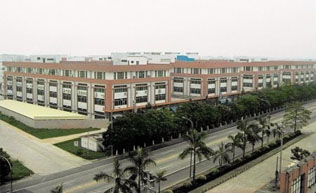
You have to understand that the cost of doing business depends on many factors – and labor is just one small part. For example, access to skilled people and the important vendor base is paramount, and in that respect we continue to believe in China. The world has become an extremely dynamic place and what is right today is often wrong tomorrow. We have always focused on building a highly efficient, scalable enterprise, and China has been a central location for our business for the last 30 years.
Nearly 15 years ago, we invested huge sums of money in the creation of “BEHRINGER City”, our wholly owned manufacturing plant, which includes dormitories and facilities such as basketball courts – and even a medical facility. The main reason for building our own plant was to maintain control of product quality, which can be a challenge when working with a subcontractor. That is why we manufacture virtually everything in-house including electronics, cabinetry, cables and faders – all the way to making the pulp for the speaker cones. Although it is not always cheaper to produce everything in-house, it ultimately leads to greater quality and a much more consistent product.
3. How do you continue to improve quality while also driving down costs?
Nothing is left to chance when it comes to quality. Today, we are very proud of our state-of-the-art manufacturing plant, but we had to go through a steep learning process, which you can only experience if you have your own factory.
We’re now planning the next growth phase, and with it our brand new MUSIC City manufacturing plant which is about to open. It will be about four times the size of our current facility and the most sophisticated and automated factory by any standard. This is necessary to accommodate the strong sales growth we’re enjoying, plus the additional space will be needed for future MUSIC acquisitions.
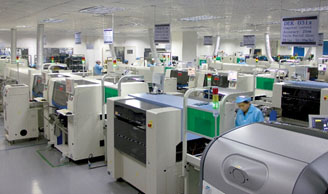
Let me begin by saying that at MUSIC, all of our profits are reinvested into the Vision and future of the Company. Over the past three years alone, we have invested over US $20 million in the most sophisticated manufacturing equipment - from high-speed SMT (Surface Mount Technology) machines to optical inspection scanners, X-ray and in-circuit testers, which includes a massive inventory of Audio Precision test devices.
Unlike most competitors in our industry, MUSIC owns its manufacturing facility and does not have to make it a profit center, which gives us a massive competitive advantage. We control every commercial and quality aspect - what we buy and what we use. That way, we have full control over purchasing, the quality of our manufacturing processes and the quality control at the back end.
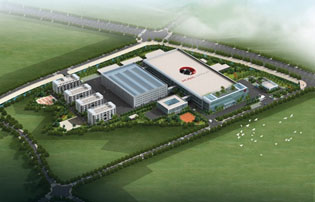
In line with our philosophy, any cost benefit is reinvested in the business, and ultimately delivers enhanced products at even more affordable prices. Vertical integration down to component levels and total control of quality, vendors and purchase prices is critical.
There is also a big advantage with integrated R&D and manufacturing. Design engineers love to have a functioning factory next to them, and the 140 new TURBOSOUND products launched within a year have fully benefitted from having many of our experienced UK engineers in an office no more than 50 meters from the wood shop next door.
This is further supported by a huge invest-ment in quality control and reliability test procedures, all of which is in-house and overseen by a large contingent of British engineers that are based in MUSIC City. It is this powerful symbiosis of high-level European engineering and extremely - automated Asian manufacturing process that makes it all possible; it is simply the best of both worlds!
4. What is your vision for MUSIC for the next five years?
Next year will see the opening of our new MUSIC City, a US $100 million fully automated manufacturing and Innovation compound in Zhongshan Province, the second such community created by the company – and the projected workplace of up to 10,000 people.
In fact, MUSIC’s Asian operation encompasses both manufacturing and innovation centers that seamlessly integrates with our European “Centers of Excellence”.
We believe this is important to our customers, since they are our most valuable assets. Our goal and vision for the future is to provide them with the ultimate accessibility and visibility into our organization – right down to the shop floor, where a customer anywhere in the world can follow through a web cam how we assemble “his/her” product. We want our customers to become an intrinsic part of our Company so they can fully enjoy an amazing customer experience.
5. Tell us about the R&D process at MUSIC
R&D or Innovation (as we call it today), is the jewel of our Company and I lead it personally. With over 400 engineers worldwide and another 100 currently being hired, I believe I can safely say we have the largest research team in the pro audio industry.
With 7 massive Innovation hubs based in the UK, Germany, Denmark, Sweden, Canada, China and the Philippines, we have created true Centers of Excellence run by world-class engineers. As the birthplace of many famous audio brands, Europe has a great heritage and an amazing talent pool. We see our Centers of Excellence as being at the cutting edge of innovation and IP creation, and to be honest – a trailblazer for the rest of the industry.
MUSIC has spent over US $5 million purchasing the Manchester Innovation building and we have increased our workforce from the original 8 employees to close to 100 in less than five years (with 30 more positions to fill). With MUSIC’s global engineering power of some 500 engineers, this again demonstrates our massive capabilities and investment in the future.
Indeed recruitment is heavily underway, building upon a successful five-fold increase in the digital console market share by MIDAS since the acquisition. With strong investments in TURBOSOUND, revenue has equally increased alongside MIDAS, and we are now in the process to build a new US $10 million Center of Excellence facility in Aarhus, Denmark, four times the size of the current building.
MUSIC employs over 3,500 people and we have 17 offices all over the world. This requires excellent systems and a tight management infrastructure. What you are ultimately looking for are synergies in order to scale your business. For many years, we have heavily focused on efficiencies, which include building repeatable, scalable and automated processes. Today, we are so advanced that we have become a co-innovation partner of SAP, the German leader in business automation systems.
A few years ago when our organization matured, we built an umbrella organization on top called “MUSIC”, which serves as the host of the MIDAS, KLARK TEKNIK, TURBOSOUND, BEHRINGER and BUGERA brands. With the recent acquisition of the TC Group, it now also includes the LAB GRUPPEN, LAKE, TANNOY as well as TC ELECTRONIC and TC HELICON.
It is based on two very separate operational structures. On one side, we have what could be called “common operational assets” or “shared services”, such as sourcing, manufacturing, logistics, information technology, finance, etc. Those are functions that benefit from “scale and critical mass”, and by design are provided through separate divisions that employ best industry practice and technology.
On the other side, we have three customer facing Divisions or market verticals. The Enterprise & Entertainment brands encompass brands such as MIDAS, KLARK TEKNIK, LAB GRUPPEN, LAKE, TURBOSOUND and TANNOY, and the Creation Division with TC ELECTRONIC, TC HELICON, BEHRINGER and BUGERA brands. Lastly the Home & Entertainment Division is focused on TANNOY with its beautiful 90 years of history.
These distinct and separate Divisions have their own identities and intrinsic critical infrastructure such as product management, sales, marketing and channel distribution. This all combines to make them who they are and to retain brand value.
This separation is critical, as the brand values are different and the intended use of the products fits into very different market segments. We believe that this kind of operational framework provides all our brands with a competitive advantage and tremendous operational efficiencies, which would otherwise be unattainable economically within each entity.”
6. What are you doing to ensure the quality and reputation of the brands you have acquired?
That’s a very good question, and one that I would particularly love to answer.
We were the first to move production to China back in 1990, and in 2001 we were the first to open a factory entirely our own. Nowadays just about every manufacturer uses Chinese production, and while this has escalated the price war considerably, you have to keep it in perspective.
MUSIC produces about 5 million units a year and this is a huge responsibility, because the associated risks are far greater than for someone who just knocks out a few units in his own backyard. There’s an old adage that goes like “the greater the production volume, the more important it is to have the best quality as any error can simply wipe you out”.
Imagine that if one single component turns out to be bad, and if it is used in all products, then it can easily ruin the entire company. As an instance, just look at the magnitude and financial impact of the massive car recalls.
That’s why we go to such extreme lengths to ensure the highest commitment to quality. We have hundreds of employees whose task it is, to take each component to its very limits and beyond. We’ve developed special machines to turn potentiometers, or move faders and switches, through hundreds of thousands of cycles, right up to the point of destruction. We do this to establish the maximum operational life expectancy of any given component, long before it is approved for use in production.
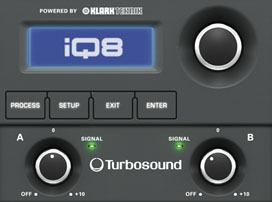
Award-winning MIDAS M32 console.
We designed and built “torture chambers”, where we can punish components and finished units with corrosive salt-water, searing heat and sweltering humidity. We’ve got tables that shake and vibrate, and a drop-test fixture to execute the ultimate stress test. All of this costs time and money, but it’s worth it; after all, it’s our name printed on each and every product. This dedication to the highest possible quality has resulted in one of the lowest failure rates in the industry, according to statistics provided by our dealers and distributors.
Now honestly, how many other manufacturers can offer such a value for the money?”
Also, about ten years ago, I made a conscious decision to change the direction of MUSIC by focusing on innovation, cutting-edge quality products and brand management. As a result, the first step of our strategy was to establish the Enterprise & Entertainment Division – apart from the existing Prosumer or Creation Division how we call it today.
The acquisition of the most prestigious MIDAS and KLARK TEKNIK, TURBOSOUND companies, plus now the TC Group, laid the foundation for the Enterprise & Entertainment Division and the execution of our global strategy. Developing this division is a major focus and we drive this with relentless determination.
MIDAS, KLARK TEKNIK, LAB GRUPPEN, LAKE, TURBOSOUND and TANNOY are our crown jewels, and these - up to 100-year old iconic brands - are absolutely critical to the success of MUSIC. We will continue to put tremendous resources into our Enterprise & Entertainment Division with the ultimate goal of making these brands the industry leaders.
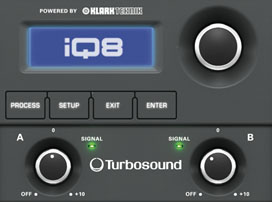
The new TURBOSOUND speakers with built-in KLARK TEKNIK digital networking that allows direct integration with MIDAS and BEHRINGER mixing consoles.
We are heavily investing in innovation and intellectual property; for us, innovation not only relates to Research and Development, but competitive advantages in every step of the business: technology, manufacturing, quality control, supply chain and after sales support (Care) – and especially education, training and development of our sales channels.
With the launch of the M32 digital mixing console, it has immediately become the single biggest success in the entire 40-year history of MIDAS.
We will continue to invest in amazing products, cutting-edge quality and our industry-leading customer experience. We have great people in place and are thrilled that many more want to join us from the competition. It’s very rewarding to see that the industry is noticing our bright future and how many people want to be part of a winning team!
7. Let’s talk about the individual Uli Behringer. We know you love the music industry, but have your aspirations changed over the years, and is there an endgame?
There is always an endgame, and it’s usually defined by nature (smiles). But what amazes me is that I love my job now more than ever, and the people close to me know that I only sleep about 4 hours a day. I always look up to my mother who is 86-years old; she swims half a mile a day and still works as a simultaneous interpreter. Age is just a number as long as you keep yourself busy, healthy and you pursue happiness in life. Deep inside I am just a simple musician and an engineer – and that will never change.
I love the music industry and will never do anything else. But while I was mainly product driven in the early years, I have become obsessed with innovation, efficiency systems and processes, and I find that immensely mentally stimulating. Books have become great friends and my desire to learn has intensified, as I get older.
As a minimalist, I am not at all driven by money or luxury – and all I care is being surrounded by the most phenomenal and passionate people so we can make a difference and serve our customer. I am so proud of our employees who have helped me build this business – and some of them stayed with me for over 20 years!
8. Do you have a guitar propped up against the sofa at home (OK, maybe a piano in the living room)?
Unfortunately, I never learned to play the guitar, and also have not managed to make my grand piano lean against the sofa. I am a classically trained pianist who has developed a passion for jazz. Since my childhood I’ve always loved romantic music such as Chopin, Liszt, Rachmaninoff, etc.
I’ll never forget one evening during my degree studies, when by chance I stumbled across a Piano Bar in Dusseldorf. Not only did the owner look like Frank Sinatra, he sang his entire repertoire. I was totally fascinated by this music, and that’s how I got into jazz. The harmonic structure of Jazz is closely related to that of romantic music, so it’s no real surprise that I fell for jazz music. For me, the greatest jazz pianist of all times was, and still is, Oscar Peterson – and I’ve spent many years transcribing his improvisations and learning to play them.
To this end, I modified a cassette recorder to play at exactly half speed, thus one octave lower. This made it easier for me to pick out the harmonic scales. Unfortunately I didn’t have pitch and speed shifters back then.
9. Any other musicians who you follow?
Other musicians who I respect alongside Oscar Peterson are Al Jarreau, George Shearing, Monty Alexander, Larry Carlton, Lee Ritenour, Take Six, Manhattan Transfer, George Benson, Earth, Wind & Fire, etc. Many people won’t know these names, which is one sure sign that I’m getting older (laughs). I am also a great fan of Latin pianists Gonzalo Rubalcaba and Tania Maria, who are absolutely mind-blowing.
One of the absolute highlights in my life was getting to play with Lee Ritenour at the 2010 NAMM show; the video can be seen on YouTube. I heard Lee 30 years ago at the Montreux Jazz Festival and I have adored him ever since. Playing piano is something that makes me completely forget about business. One day, I may start my retirement as a pianist in a jazz bar.”
10. Where is ‘home’?
That’s a really good question – but a rather complex one!
When we began shifting production from Europe to China, it soon became clear this was not going to work by visiting China twice a year and doing the rest by phone and fax. So in 1997, I decided to move to Hong Kong, in order to be present “on site” and oversee production. This was a key factor to our success – and the start of an odyssey that fundamentally changed my life.
Moving to Hong Kong was indeed one of the best decisions in my life. I’ve learned a tremendous amount and gained a great deal of experience. Hong Kong is one of the most exciting and restless cities in the world. It isn’t called the “24/7 city” for nothing; it just never sleeps. It’s not unusual for a vendor to call at 3 o’clock on a Sunday morning to clinch a deal. Twice a week I crossed over into China to visit the factory, which required complying with lots of VISA and travel restrictions. On many occasions, I had to stand for two hours or more in the blazing sun, or the pouring rain before being allowed to enter China.
My time in Hong Kong was totally crazy. I would regularly leave the office at seven in the evening to meet friends at the bar, partying until four in the morning. Then back to the apartment, four hours sleep and at eight o’clock, I was back in the office. This lifestyle has inevitably left its scars, the time came when I was really burned out. I learned two things – burning the candle at both ends has its consequences, and never try to out drink a Dutchman, because no regular human can compete!
I had lots of friends who were musicians from the Philippines and we would meet every Sunday at the Mandarin Hotel’s Captain’s Bar for a jam session. One day, one of the guys came up to me and asked if I’d been hit by a truck. I knew then it was time to slow down, and my friends suggested I take a short holiday in Manila.
If you’ve never been to the Philippines, let me tell you that because of their Spanish heritage, Filipinos are actually Latinos and some of the friendliest, most hospitable people you will ever have the pleasure of meeting. Not to mention that the climate is warm, the sea is only 20 minutes from my house, and music and art runs in the blood of every Filipino.
It came as no surprise to find out that the engineers are incredibly gifted. I immediately opened an office and staffed it. Five years down the line and we’ve got 130 employees in Manila, and my planned 3-month break never happened (laughs)! I’ve been living in Asia for nearly 20 years now, and really don’t think of ever moving back to Europe.
So if you ask me – yes the Philippines are my declared home.
11. Any message for your customers?
I’d like to take the opportunity to say a big Thank You to all our customers; they have been instrumental in making this company what it is today. Every day we receive friendly letters of appreciation from musicians who have been able to realize and extend their musical possibilities with the help of our equipment.
These humbling letters always remind me how I started as a struggling musician. There’s no better motivation than to read these letters and emails, and this is the reason why our employees and I are still so passionately committed to what we do.
Aren’t we all in a beautiful industry that allows us to make and use products that enrich people’s lives?”

